Table of Contents
Understanding Content Management Systems (CMS)
In today’s digital age, a comprehensive system for managing content is essential for ensuring smooth operations and delivering high-quality online experiences. As over half of the world’s websites rely on content management systems, or CMSs, understanding their purpose and functionality has become increasingly important. A CMS is the backbone of many websites and internal networks, yet many organizations still aren’t fully familiar with this technology.
What is a Content Management System (CMS)?
A Content Management System (CMS) is a powerful software tool that allows users to create, publish, organize, edit, and maintain digital content on websites and other online platforms without requiring advanced technical skills. Designed for ease of use, a CMS simplifies content management processes, making it possible for individuals and organizations to maintain an active, dynamic online presence without extensive programming knowledge. CMS platforms are widely used across industries, as they allow content teams, marketers, and business owners to focus on crafting and sharing content rather than handling the technical complexities of web development.
Most CMS platforms operate using two key components that work together to streamline the creation and delivery of content:
1. Content Management Application (CMA)
The Content Management Application (CMA) is the part of a CMS that allows users to create, modify, and delete website content with minimal technical expertise. This user-friendly interface typically resembles word processing software, enabling users to easily add text, images, videos, and other multimedia elements to their sites. Key features of the CMA include:
• Text Editing
Users can add and format text without coding, making content creation accessible to those with no knowledge of HTML or CSS.
• Image and Media Uploading
The CMA often includes drag-and-drop functionality, making it easy to upload images, videos, and other media directly to the website.
• Page Layouts and Templates
Users can select and customize pre-designed templates to create a cohesive look across the website, ensuring a professional appearance even without design skills.
Through the CMA, non-technical users can perform tasks that previously required web development skills, such as updating blog posts, creating new product pages, or restructuring the site’s layout. The intuitive nature of the CMA helps reduce training time for new users, making it a practical solution for teams of all skill levels.
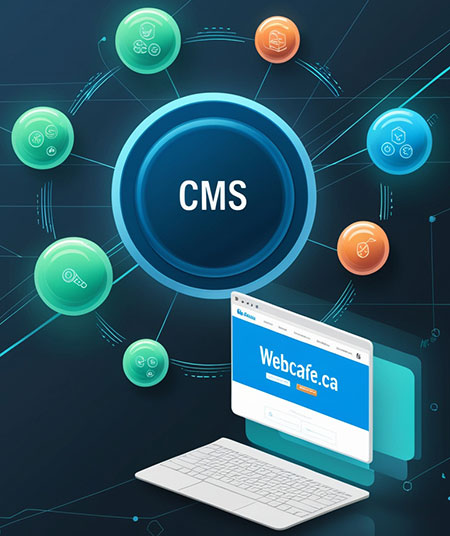
2. Content Delivery Application (CDA)
The Content Delivery Application (CDA) is the backend component of a CMS that compiles the content created in the CMA and organizes it for publication. While the CMA focuses on content creation, the CDA is responsible for the technical aspects of displaying that content on the website. The CDA handles tasks such as:
• Content Compilation
The CDA takes the text, images, and other elements created in the CMA and organizes them according to the structure and design settings of the website.
• Website Updates and Synchronization
The CDA ensures that updates made in the CMA are reflected on the live site in real time, maintaining the site’s current look and feel.
• Content Rendering and Formatting
The CDA makes certain that the content is displayed correctly across different devices, browsers, and screen sizes. This ensures a consistent user experience regardless of where visitors access the site.
The CDA works behind the scenes, taking care of the technical processes required to deliver a seamless, up-to-date experience for website visitors. With this architecture, the CMS allows users to focus on content quality without worrying about how the content will be displayed or if it will work properly on different devices.
Advantages of Using a CMS
For users with limited coding knowledge, a CMS provides a streamlined, efficient, and user-friendly way to manage digital content without the need for custom coding. The benefits of using a CMS include:
1. Reduced Development Time
CMS platforms eliminate the need for hand-coded web pages, which means teams can focus on content creation rather than technical development.

2. Consistency Across the Site
Pre-designed templates ensure that new pages or changes align with the site’s overall design, preserving brand identity and visual consistency.
3. Enhanced Collaboration
CMS platforms allow multiple users to work on different parts of the site simultaneously, which is ideal for larger teams.
4. Ease of Use
Even those without technical backgrounds can manage and maintain a professional website, thanks to the intuitive CMA interface.
5. Scalability
A CMS grows with your organization, making it easy to expand the site or add new features as your needs evolve.
For organizations seeking to maintain an engaging online presence without dedicating excessive resources to technical development, a CMS is an invaluable tool. By simplifying the process of content creation, organization, and publication, a CMS empowers users to focus on producing high-quality, relevant content that drives engagement and supports their digital goals.
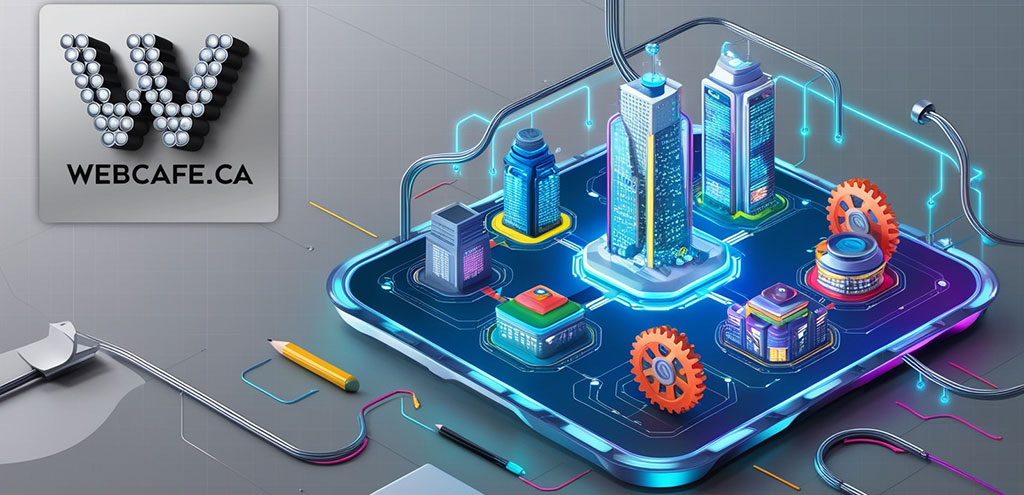
How Does a Content Management System (CMS) Work?
A CMS operates through several key functions that enable seamless content creation, organization, publication, and display. These functionalities streamline the web management process and provide both technical and non-technical users with the tools they need to maintain a professional, dynamic website.
1. Creating Website Content
A CMS provides an intuitive, user-friendly interface for content creation that resembles word processing software, allowing users to create, format, and organize text and multimedia elements without requiring technical expertise. This flexibility enables rapid content creation and easy control over the structure of web pages, ensuring that content remains consistent with the website’s design and branding.
• Text and Image Management
Users can enter text, add images, and apply formatting styles within a straightforward editing environment. Most CMS platforms offer drag-and-drop functionality for easy image placement, making the process of creating visually appealing pages accessible even to those without design skills.
• Customizable Layouts
Many CMS platforms include pre-designed templates and layout options, allowing users to choose from different page designs and structures. These templates ensure a cohesive look across the site while also making it easy to update the layout as the site grows.
• Real-Time Collaboration
Many CMS platforms support web-based environments, which allow for remote management of website content. This feature is especially useful for organizations with distributed teams who require collaborative, real-time editing capabilities. Team members can work on the same content simultaneously, streamlining the workflow and reducing delays.
The flexibility and ease of use of the CMS content creation tools mean that even users without a background in coding or design can contribute to building a visually engaging, well-structured website.
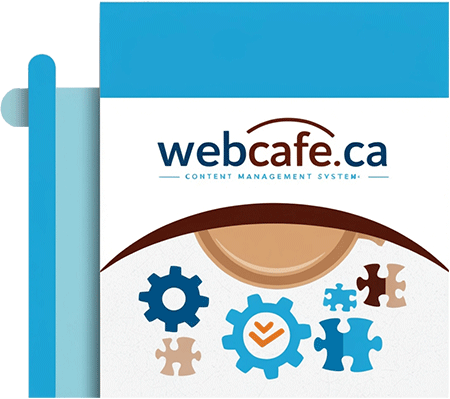
2. Content Management and Organization
Once content is created, it is stored within the CMS’s central repository. This core storage maintains all content, settings, and structural information related to each page, ensuring that the entire site can be easily managed and updated. This centralized approach to content storage offers several benefits:
• Tracking and Version Control
A CMS tracks all changes made by users, along with timestamps and user information. This feature allows administrators to review the history of edits, revert to previous versions if needed, and monitor who made specific changes, providing full oversight on content modifications.
• Access Control and Permissions
The CMS allows administrators to set different levels of access for various user roles, such as editors, contributors, and reviewers. Access control features ensure that sensitive or high-priority content is available only to those with the appropriate permissions, thus enhancing site security and protecting confidential information.
• Integration with Other Systems
Many CMS platforms can be integrated with external systems, databases, and third-party applications. For example, some CMS platforms sync with customer relationship management (CRM) tools or analytics platforms, enabling seamless data sharing and providing insights into user engagement with the website.
After content is created or edited, it usually goes through an automated review process. The CMS routes content for approval and notifies the relevant team members, facilitating a streamlined workflow. This automated process ensures that content meets quality standards and adheres to brand guidelines before publication.
3. Publishing Content
Once content has passed the review process and received final approval, it can be scheduled for publication on the website. CMS platforms often include powerful publishing engines that give users precise control over how and when content appears on the site.
• Scheduling and Automation
Users can schedule content to go live at specific dates and times, which is especially useful for businesses with seasonal promotions or timed content, like blog posts or product launches. This scheduling flexibility allows for better planning and consistency in content updates.
• Templates and Themes
CMS platforms often come with various templates and themes, enabling users to easily customize the appearance of each page. By applying or modifying themes, users can adjust the visual design of the site to reflect branding changes or seasonal aesthetics without redesigning the entire website.
• Content Layering
With content layering, users can manage multiple versions of pages that can be swapped in and out based on the site’s needs. This feature allows organizations to adapt the site’s look and feel dynamically to match evolving business requirements or user preferences.
The publishing functionality of a CMS makes it simple for users to maintain an active, up-to-date online presence, even on large or complex websites.
4. Displaying Content to Visitors
A CMS is also designed to optimize content display across a variety of devices and browsers, providing a positive experience for all visitors. This adaptability is crucial as more users access websites from diverse devices and screen sizes.
• Responsive Design
CMS platforms often include responsive design features, automatically adjusting the layout and appearance of content based on the device being used, such as desktops, tablets, or smartphones. This ensures that the website looks professional and functions smoothly on any device.
• Cross-Browser Compatibility
A CMS ensures that the content displays properly across different browsers (e.g., Chrome, Safari, Firefox) by automatically making adjustments to layout and formatting. This capability guarantees a consistent experience for all users, regardless of which browser they choose.
• Dynamic Content Display
Many CMS platforms support dynamic content, which changes based on user interactions or preferences. For example, a CMS might enable product recommendations based on past user behavior or display location-specific information. This level of interactivity makes the website more engaging and personalized for visitors.
By optimizing content display and providing dynamic interaction options, a CMS can greatly enhance the user experience, encouraging visitors to explore more of the website’s offerings and return in the future.
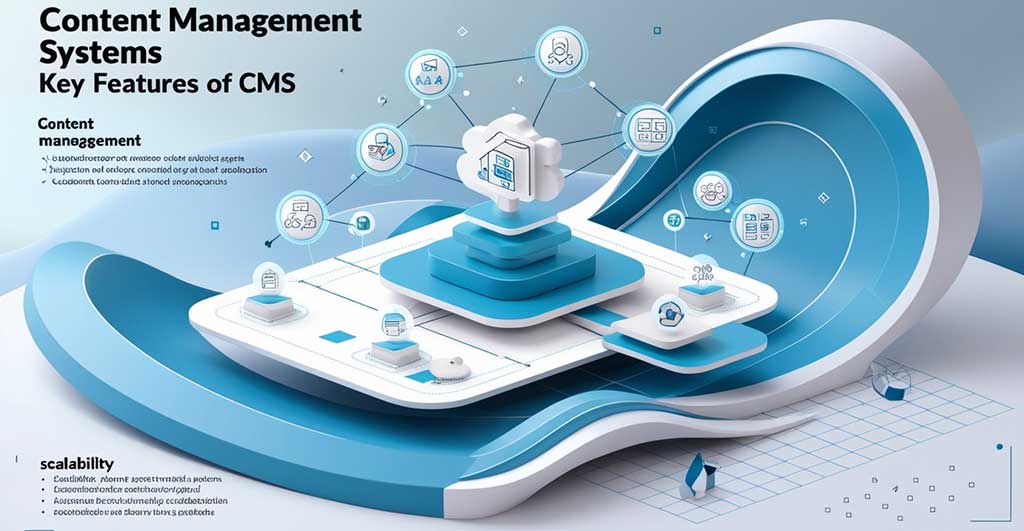
Key Features of Content Management Systems (CMS)
Content Management Systems (CMS) provide a comprehensive suite of features designed to simplify website creation, editing, and organization for users of all technical levels. These features enable efficient content management, collaborative workflows, and flexible publishing options, empowering businesses and individuals to maintain engaging and professional websites. Here are some of the key features that most CMS platforms offer:
1. Web-Based Publishing
Web-based publishing is one of the core features of a CMS, allowing users to easily create, edit, and publish content directly from their browser. CMS platforms typically offer a wide array of pre-designed templates and intuitive tools to make content creation straightforward and efficient.
• Templates and Themes
CMS platforms include customizable templates and themes that enable users to apply a consistent design across their site without needing design skills. These templates are often tailored to various industries, making it easier to choose a look and feel that suits your brand.
• Drag-and-Drop Editing
Many CMS platforms feature drag-and-drop editors that simplify the process of adding, arranging, and formatting content. Users can insert images, videos, text blocks, and other elements by simply dragging them into place, making it accessible even for beginners.
• User-Friendly Interface
With a clean, intuitive interface, most CMS platforms resemble word processors, allowing users to format text, adjust layouts, and preview pages before publishing. This helps reduce the learning curve and makes web management approachable for non-technical users.
This feature enables quick and convenient content updates and ensures that the website remains fresh and engaging for visitors without requiring extensive technical knowledge.
2. Format Management
A CMS supports multiple format management options, enabling users to handle various document and media types efficiently. This flexibility is essential for organizations that need to present different types of content consistently and accessibly.
• Document Conversion
CMS platforms make it easy to convert documents, images, and other digital assets into commonly used web formats, such as HTML, PDF, and XML. This feature allows organizations to upload files in their original format and convert them as needed for online viewing.
• Multimedia Support
Format management tools often extend to multimedia content, allowing users to upload, manage, and display various media types—such as images, audio, and video—directly on their website.
• Content Standardization
With format management, content is standardized across the website, ensuring consistency in presentation and accessibility. This feature is particularly valuable for businesses with extensive content libraries that need to maintain a uniform look and feel.
By streamlining the handling of diverse content types, CMS platforms make it easier for teams to deliver a cohesive user experience and optimize content for different formats and devices.
3. Version Control
Version control is an essential CMS feature that allows users to track changes, maintain a detailed record of content updates, and revert to previous versions when necessary. This is especially useful in collaborative environments where multiple users contribute to content creation and editing.
• Change Tracking
CMS platforms keep a log of edits, showing who made changes and when. This transparency provides accountability and allows administrators to review the modification history of each page.
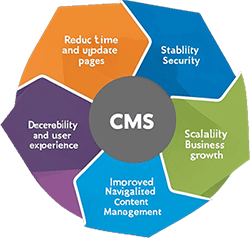
• Content Restoration
If an error is made or a previous version of content is needed, version control allows users to revert to an earlier version, preventing data loss and maintaining content integrity. This feature is helpful for correcting mistakes quickly and recovering deleted or overwritten content.
• Collaborative Workflows
With version control, multiple users can work on the same content without fear of overwriting each other’s contributions. This is ideal for teams who need to make ongoing updates to content, as it ensures that everyone can see the latest changes and work seamlessly together.
Version control is invaluable for teams working on complex or regulated content, as it enables continuous improvement and a safeguard against accidental data loss.
4. Search and Indexing
Search and indexing features within a CMS enable users and website visitors to locate information quickly and efficiently, enhancing navigation and improving the overall user experience. For larger websites with extensive content, these features are essential for helping users find relevant information.
• Internal Search Function
CMS platforms offer built-in search functionality that helps visitors locate specific pages or content quickly. The search engine scans indexed content and returns relevant results, making navigation straightforward and user-friendly.
• Content Indexing
As new content is created or updated, the CMS automatically indexes it, ensuring that the site’s search functionality is always up-to-date. This indexing process helps organize content based on keywords, categories, tags, or other metadata, making it easier to find.
• Advanced Filtering and Sorting
Many CMS platforms also allow administrators to set up advanced filtering options to refine search results based on specific criteria, such as date, author, or content type. This feature ensures that users can pinpoint information more accurately, enhancing engagement and reducing frustration.
With these capabilities, CMS platforms streamline the content retrieval process, enabling site administrators and users to access valuable information quickly and efficiently.

Additional Features of CMS Platforms
Beyond these core features, CMS platforms often include other tools that enhance functionality, security, and customization options:
• SEO Tools
Built-in SEO tools help optimize content for search engines, allowing administrators to add metadata, manage URLs, and configure site maps to improve search engine rankings.
• User Permissions
CMS platforms provide flexible access control, allowing administrators to define user roles and permissions based on their responsibilities, thus protecting sensitive information and maintaining content accuracy.
• Analytics and Reporting
Many CMS platforms integrate with analytics tools, giving administrators insights into content performance, user engagement, and site traffic.
By offering these key features, CMS platforms enable businesses and individuals to create, manage, and maintain professional websites efficiently and effectively.
Advantages and Applications of Using a Content Management System (CMS)
A Content Management System (CMS) provides a versatile and efficient platform for businesses, organizations, and individuals to manage their digital content. CMS platforms empower teams to streamline their workflow, focus on creating valuable content, and engage users more effectively, without the need for extensive technical expertise. Here are the key advantages of using a CMS and how they support a wide range of business applications:
1. Simplifying the Web Design and Management Process
One of the primary advantages of a CMS is that it simplifies the entire web design and management process. With user-friendly interfaces, intuitive editing tools, and pre-designed templates, CMS platforms make it easy for users to manage website content without coding skills.
• Reduced Dependency on Technical Experts
CMS platforms allow content creators, marketers, and business owners to manage websites without relying on developers for every change. This independence accelerates the content management process, giving teams more control.
• Consistency in Design
With pre-built themes and templates, CMS platforms ensure consistency across all pages, creating a cohesive user experience that enhances brand identity and professionalism.
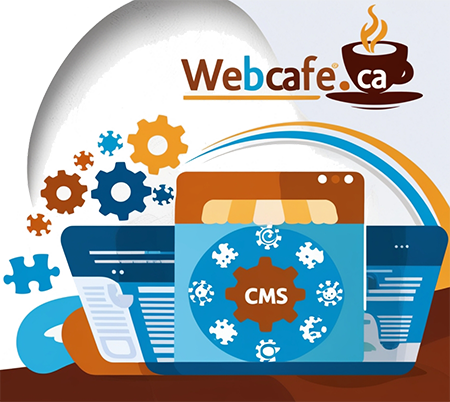
This streamlined process frees up resources, allowing businesses to focus on content strategy and audience engagement instead of technical maintenance.
2. Reducing Time to Create and Update Pages
CMS platforms are built to support efficient content creation and updates, allowing businesses to quickly publish new content or make adjustments as needed. Features like drag-and-drop editors, reusable templates, and custom widgets enable rapid content changes.
• Accelerated Content Deployment
Creating and launching new pages can be done quickly with a CMS, as the need for custom coding is minimized. This allows businesses to respond promptly to market trends, product launches, or other time-sensitive updates.
• Editable Templates for Fast Modifications
With editable templates, users can update site elements and content with minimal effort, making it possible to refresh the website regularly to keep it relevant and engaging.
This feature is particularly valuable for companies in fast-paced industries where quick adjustments and timely publishing are crucial for staying competitive.
3. Stability and Security
CMS platforms are continuously updated and maintained by development communities or vendors, ensuring that the software remains stable and secure. Security vulnerabilities are patched promptly, protecting the site from various threats.
• Regular Software Updates
CMS platforms provide regular updates to maintain compatibility with browsers and operating systems, which is essential for stability and security. These updates ensure that websites run smoothly and securely.
• Built-in Security Features
CMS platforms often come with built-in security measures, such as firewalls, anti-spam filters, and malware protection, safeguarding websites from potential attacks and ensuring data integrity.
For businesses handling sensitive information or customer data, the security provided by CMS platforms is invaluable in maintaining user trust and compliance with data protection regulations.
4. Scalability for Business Growth
A CMS is a scalable solution that can grow alongside a business, accommodating increased content volume, traffic, and new functionalities as needed.
• Flexibility to Add New Features
As a business expands, a CMS can easily support additional functionalities, such as e-commerce capabilities, membership areas, or forums, enhancing user engagement and enabling new revenue streams.
• Support for High Traffic and Content Volume
CMS platforms are designed to handle large volumes of content and user traffic, making them suitable for businesses of all sizes, from small startups to large enterprises.
With scalability, a CMS ensures that a website can adapt to meet evolving business needs, facilitating long-term growth and success.
5. Improved Navigation and User Experience
Many CMS platforms offer features that enhance website navigation, making it easier for users to find information quickly. Organized menus, intuitive search functions, and content categorization help improve user experience.
• Structured Menus and Content Organization
CMS platforms allow for the easy organization of pages, categories, and sections, creating a clear structure that guides users and enhances accessibility.
• Enhanced Search Capabilities
Built-in search functions enable visitors to locate specific content with ease, which is essential for larger websites with extensive information.
With improved navigation, users can interact with the site more easily, leading to higher engagement and satisfaction.
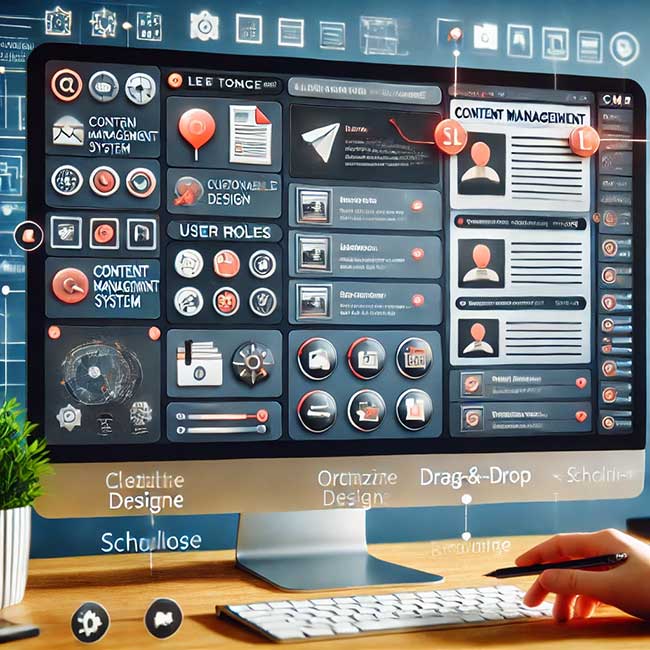
6. Decentralized Content Management
A CMS allows for decentralized content management, meaning that multiple users can manage and update content from different locations. This is especially valuable for organizations with remote teams or large teams working on various aspects of the website.
• Collaborative Editing and Content Approval Workflows
Many CMS platforms offer role-based permissions, enabling different team members to contribute based on their expertise. Content approval workflows ensure quality control before publishing.
• Remote Access and Real-Time Editing
With web-based CMS platforms, team members can log in remotely to manage content in real time, making it convenient for distributed teams to work together seamlessly.
Decentralized content management enables faster content updates, increased collaboration, and streamlined workflows, all of which are essential for organizations with dynamic content needs.
7. Content Reusability and Consistency
CMS platforms help prevent content duplication by allowing users to repurpose and reuse existing content efficiently. Content blocks, templates, and widgets ensure consistency across the website, reinforcing branding and messaging.
• Modular Content Blocks
Many CMS platforms support modular content, enabling users to create content blocks that can be reused across multiple pages. This ensures consistent branding and messaging across the site.
• Efficient Content Updates
When a piece of content needs to be updated, changes can be applied globally, updating every instance of the content across the website. This is particularly useful for updating company information, product details, or promotional banners.
By reusing and repurposing content, a CMS saves time and maintains consistency, which strengthens brand recognition and communication.
Applications of CMS Platforms for Businesses
CMS platforms support a variety of applications across industries, providing versatile tools that can adapt to different business requirements:
• E-commerce Websites
CMS platforms with e-commerce capabilities allow businesses to manage product catalogs, process transactions, and track orders, making them ideal for online retail businesses.
• Blogs and Content Hubs
CMS platforms are widely used for content-driven websites such as blogs, news sites, and content hubs, providing powerful tools for managing and publishing articles, multimedia, and user-generated content.
• Intranets and Internal Portals

Many businesses use CMS platforms to build intranets or employee portals, creating centralized resources for sharing company information, documents, and training materials.
• Educational Websites
For educational institutions, a CMS can host courses, manage student information, and support interactive learning through content modules, making it a valuable tool for e-learning platforms.
• Portfolio and Service-Based Sites
Professionals such as designers, photographers, and consultants can use CMS platforms to showcase portfolios, provide information about services, and attract clients with an easy-to-maintain site.
To recap, a CMS enhances customer satisfaction by improving user experience, enabling efficient site management, and supporting business objectives such as increased sales, enhanced communication, and broader reach. By choosing a CMS that aligns with their goals, businesses can create dynamic, scalable, and secure websites that engage users and foster growth.
Conclusion: Choosing the Right CMS
In today’s digital landscape, a Content Management System (CMS) is an indispensable tool for businesses and individuals aiming to create, manage, and maintain a professional online presence. By providing an intuitive interface, collaborative features, and seamless content organization, CMS platforms empower users of all technical levels to efficiently manage their websites. From simplifying web design to improving content accessibility and security, CMS platforms offer significant advantages that can help businesses scale and adapt to changing needs.
The robust features of a CMS, including web-based publishing, version control, and search capabilities, ensure that content management is not only streamlined but also consistent and secure. As businesses continue to evolve in an increasingly digital world, the ability to update and manage content quickly, collaborate effectively, and provide a smooth user experience becomes critical to success. Whether for e-commerce, blogging, education, or internal communication, a CMS provides the flexibility and functionality needed to support a wide array of business applications.
By choosing the right CMS, businesses can focus on what matters most—delivering valuable content to their audiences—while ensuring that their website remains dynamic, secure, and capable of handling future growth.


